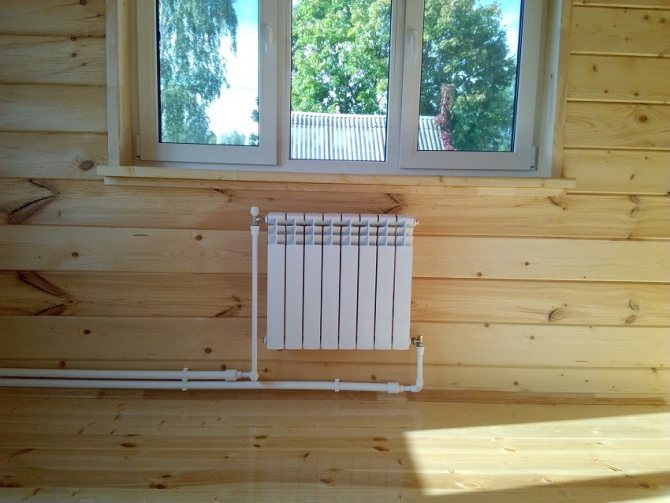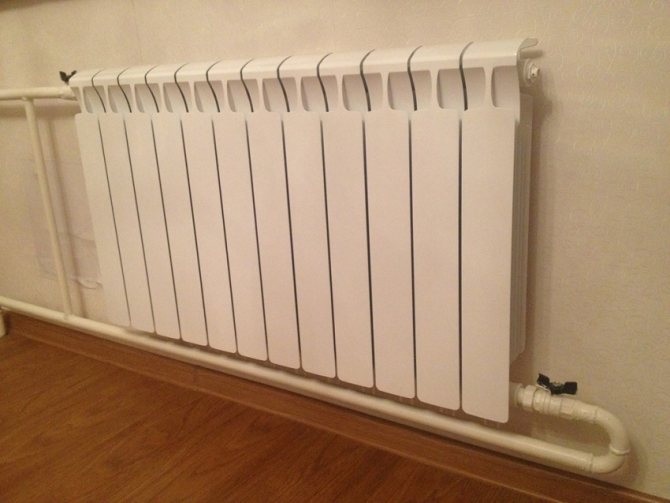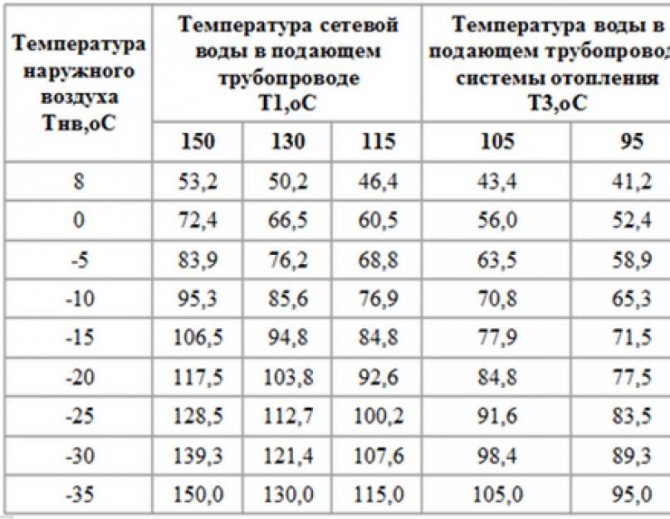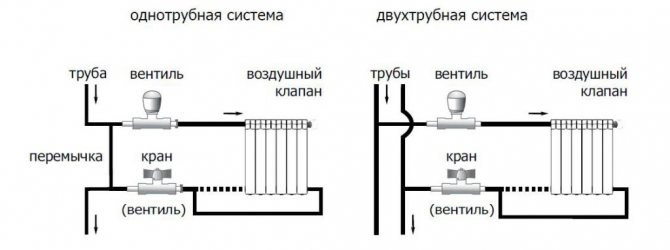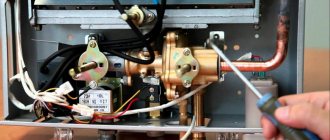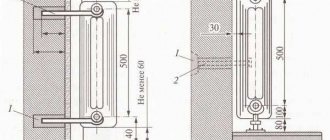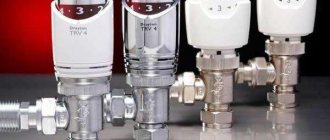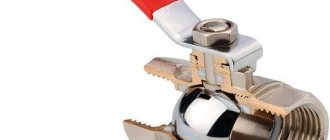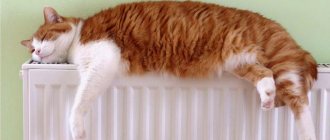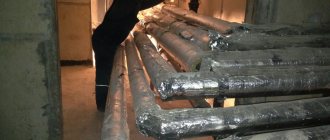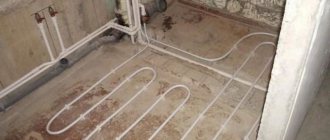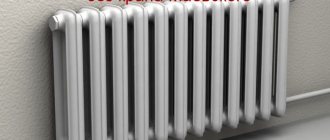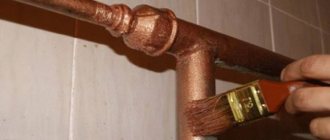Everyone would be your problem.
You can just throw on a blanket and it will already be less warm. V_B, 02 Nov. 11, 22:46
drone77
, I really understand you! while he was living with his mother-in-law, they wrapped blankets on the radiator and covered them with a shield (tabletop), plus an open window behind the curtain. saved me poorly - I could only sleep on the floor, but to fall asleep I pressed my back against the cold wall, forgot to push up - I had a cold. I live with vents, but I feel cold below 27C in my apartment, I rebuilt. and how to sleep vserno to the wall I press and the window is wide open)))
In my opinion, the child himself gives off half a kilo! (although it is customary for air conditioners to consider 100W per person)
If the bypasses with control valves did not have time to be delivered before the heating season - insulate (a box made of polystyrene, foam is thicker, at the beginning of summer a welder with valves!
Last ed. 02 Nov 11, 23:28 from drone77
The three-way is put on a bypass according to science, so that it does not block the entire riser. Here's a nice article about regulators https://bul-bul.com.ua/article/sysot.php
Well, I don’t know, it seems like two have the same archip, 03 Nov. 11, 06:21
And what's the problem then to embed the taps? )) We run to the plumbers, talk to them. They fill out an application (if necessary) Shut off the riser from the water supply. And they cut in the taps (they are plumbers) and drain the water, if necessary.
Everything can be solved, especially if it is impossible to live! And it is best to wrap the battery with blankets)) Several layers + foil on top
If you wrap it up, it is better to make a dense "box" of thicker foam or penofol (layer 3) with foil inside, and the box is tightly adjacent to the wall so that it blocks the convection - I did not have time to check, the taps were cut in (ancestors).
The blanket does not really help, so until the drowning has not begun at full strength it can and will help.
There was also an idea to go to the basement and strangle the entire riser, since all the neighbors with plastic windows and new wallpaper and most likely suffered from the heat too, but you can not inform them;) (before the repair, the heating did not help, I had to drive the gas stove) ...
An informative article, thank you - but where is there "The three-way is put on the bypass according to science, so that it does not block the entire riser." not found. arkhip, 03 Nov. 11, 06:30
Is it realistic to pay for heating using these devices in the outback in Russia?
My batteries are a little warm, but I don't need any more, but I am crying in full. In general, what are the standards for the temperature of radiators and are there any? Please tell me if anyone is in the subject.
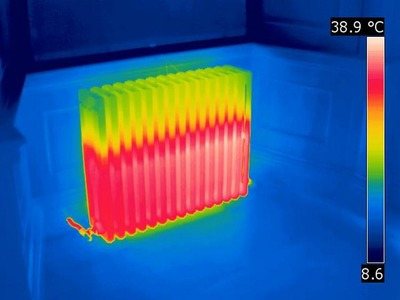
In apartments or private houses, residents are often faced with the phenomenon uneven heating of radiators heating in different parts of the home. Such situations are typical in cases when the premises are connected to autonomous heating systems.
how optimize the system heating (CO), stop overpaying and how the installation of a heat regulator for batteries will help - we will consider further.
Why do you need heat regulation in an apartment
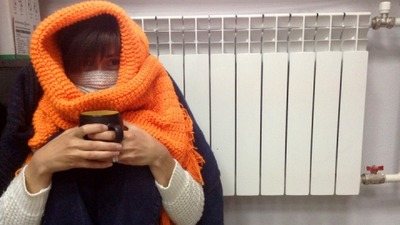

For what reasons, citizens often regulate heat in their living quarters:
- Arises the need to create the most comfortable conditions in the house for life.
- Should get rid of excess air in batteries, to achieve effective heat dissipation in indoor spaces.
- Timely installation of regulators allows refrain from frequent ventilation when the air overheats using open windows.
- Correctly selected heating controllers and their competent use will allow reduce the size of payments for this service by a quarter.
Important! Manipulations on the installation of the CO regulator should be carried out before the start of the heating season. In the midst of frost, such a procedure will require shutting off not only heating in your own apartment, but also in neighboring ones, which will create certain inconveniences.
Ball Valves
The valves are cheap, but at the same time ineffective regulating devices. Ball valves are often installed at the entrance to the radiator, with the help of which the water flow is regulated.
But this equipment also has a different functionality - shut-off valves. Valves are used to completely shut off the flow of coolant in the system. For example, in the event of a heater leak, ball valves located at the inlet and outlet of the radiator allow repairs to be carried out without interrupting the heat supply and draining the liquid.
Ball valves do not regulate heating batteries in the apartment. They have only two positions - completely closed and open. The intermediate location only brings harm.
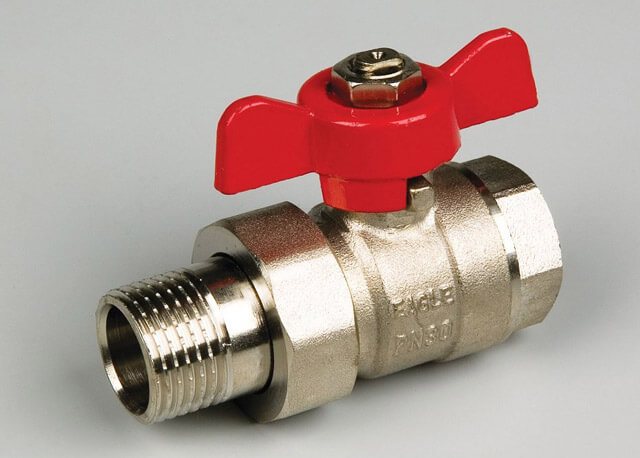

The fact is that inside such a faucet there is a ball with a hole, which in its normal position is not threatened, but in all other situations the solid particles present in the coolant grind it off and pieces break off from it. As a result, the tap will not be airtight and in the "closed" position water will continue to flow into the battery, which is fraught with big troubles in the event of a device leak.
If one of the property owners decided to do everything to manage the radiators using ball valves, it must be remembered that they must be installed correctly.
This method is usually used in apartment buildings. If the wiring is single-pipe vertical, then a hot water pipe enters the room through the ceiling and a radiator is connected to it (read: "Correct adjustment of heating batteries in an apartment - comfort in the house and saving money"). The pipeline leaves the second entrance to the device and goes through the floor to the room below.
In this case, it is necessary to correctly install the valves, since the installation of a bypass is mandatory. The bypass pipe is needed so that when the liquid flow to the radiator is closed, the coolant continues to circulate in the common house system.
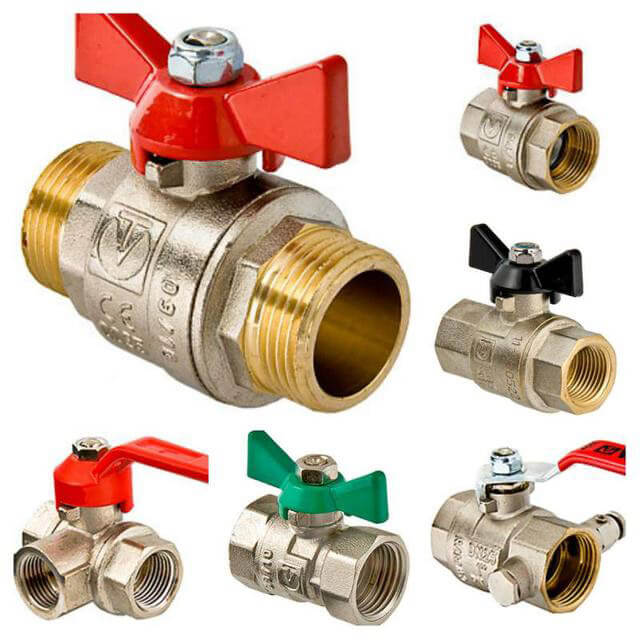

In some situations, the tap is located on the bypass in order to change the amount of water passing through it and thereby adjust the heat transfer of the battery. To ensure greater reliability of the heating system, at least three taps are installed: two will be cut-off on the radiator and operate normally, and the third will become regulating.
Setting the temperature in an apartment building on the return and supply
Installation of the heating system regulator will depend on its general arrangement... If the CO is mounted individually for a specific room, the improvement process takes place due to the following factors:
- system works from a boiler of individual capacity;
- installed special three-way valve;
- coolant pumping is happening forcibly.
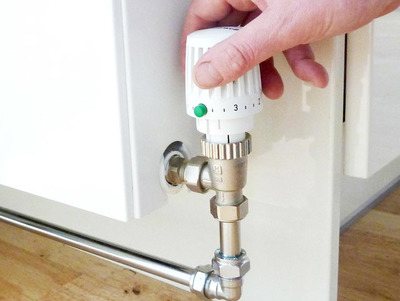

In general, for all COs, the work on power adjustment will consist of installation of a special valve on the battery itself.
With its help, you can not only regulate the level of heat in the right rooms, but also exclude the heating process altogether on those areas that are poorly used or do not function.
There are the following nuances in the process of adjusting the heat level:
- Central heating systems that are installed in multi-storey buildings, are often based on coolants, where feeding occurs strictly vertically from top to bottom. In such houses, it is hot on the upper floors, and cold on the lower floors; accordingly, it will not be possible to adjust the heating level.
- If houses use single pipe network, then heat from the central riser is supplied to each battery and returned back, which ensures uniform heat on all floors of the building. In such cases, it is easier to install heat regulation valves - installation takes place on the supply pipe and the heat continues to spread evenly as well.
- For two-pipe system two risers are already installed - heat is supplied to the radiator and in the opposite direction, respectively, the control valve can be install in two places - on each of the batteries.
Installation recommendations
In order to be able to regulate the temperature of the battery in the apartment, any type of valves is considered: they can be of a straight or angle type. The installation principle of such a device is simple, the main thing is to correctly determine its position. So, the direction of the flow of the coolant is indicated on the valve body. It should correspond to the direction of movement of water inside the battery.
Valves / thermostats are located at the inlet of the heater, if necessary, they also cut in the tap at the outlet. This is done so that in the future it will be possible to independently drain the coolant. Regulating devices are installed on radiators, provided that the user knows exactly which supply pipe, since a tie-in is made into it. In this case, the direction of movement of hot water in the riser is taken into account: from top to bottom or from bottom to top.
Compression fittings are more reliable, so they are used more often. The connection to the pipes is threaded. Thermostats can be equipped with a union nut. To seal the threaded connection, use FUM tape, flax.
If a correctly calculated autonomous heat supply is functioning in the house, then adjustment will not be required for the heating batteries, since a stable temperature regime will be ensured in all rooms. But in multi-apartment buildings, where residents often redesign heating systems, regulators will not interfere. Also, it will not be superfluous to install a common house heat meter in an apartment building, which will save the residents' funds.
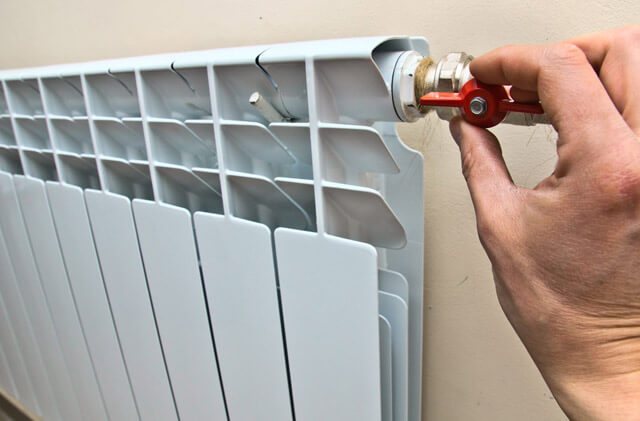

Heating regulation in a private house
In private houses, you need to pay attention to heating systems at the moment of design, you should choose a quality boiler or other heating equipment.
You can regulate the heating in the house using special technical devices of two types:
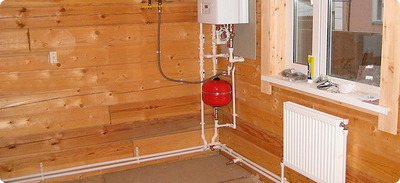

- regulating - installed both in separate sections of the network and for the entire CO, help to control and regulate the pressure level in the system, increase or decrease it;
- controlling - various sensors and thermometers, with the help of which information about the pressure level and other parameters of the heating system is obtained and there is a possibility to adjust them in one direction or another.
For timely control over the work of CO in the house, you need provide for the installation of manometers and thermometers in the areas before and after the heating boiler, at the lower and upper points of the heating system, the installation of an expansion tank, safety valves, air vents. If the heating system is working properly, the water in it should not be heated above 90 ° Cand the pressure will not exceed 1.5-3 atmospheres.
The effect of temperature on the characteristics of the coolant
In addition to the factors listed above, the temperature of the water in the heat supply pipes affects its characteristics. The method of functioning of gravitational heating systems is based on this. With an increase in the value of water heating, it expands and circulation appears.
Heating media for the heating system
But when using antifreeze, exceeding normal temperatures in the heating batteries can lead to different results. Therefore, for heat supply with a heat carrier that differs from water, it is necessary first to determine the permissible values of its heating.This does not apply to the temperature of the central heating radiators in the apartment, since such devices do not use antifreeze-based liquids.
Antifreeze is used if there is a risk of exposure to low temperatures on the radiators. Unlike water, it does not go from a liquid to a crystal-like state at a value of 0 degrees. But if the work of heat supply goes beyond the norms of the temperature table for heating in a larger direction, the following phenomena can be observed:
- foaming. This contributes to an increase in the volume of the coolant and the pressure level. There will be no reverse process when the antifreeze cools down;
- the appearance of limescale. The antifreeze contains mineral components. If the heating temperature in the apartment is violated, they precipitate. Over time, this leads to clogging of pipes and radiators;
- an increase in the density index. Malfunctions in the operation of the circulation pump may occur if its rated power was not designed for such situations.
We recommend: What characteristics are used to choose autonomous heating batteries?
Therefore, it is much easier to monitor the temperature of the water in the heating system of a private house than to control the heating level of antifreeze. Moreover, substances based on ethylene glycol emit gas harmful to humans when evaporated.
Today they are almost never used as a coolant in autonomous heat supply systems. Before using antifreeze in heating, it is necessary to replace all rubber seals with paranitic ones. This is due to the high level of permeability of this type of coolant.
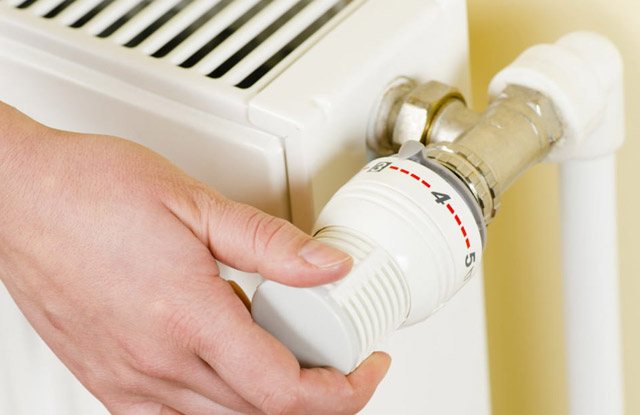

Options for normalizing the temperature regime of heating
The minimum indicators of the water temperature in the heating system are not considered the main threat to its operation. This affects the microclimate in living rooms, but does not affect the operation of the heat supply. If the water heating rate is exceeded, emergency situations may occur.
Safety group for autonomous heating
When creating a heating scheme, it is necessary to provide a list of measures aimed at preventing a critical increase in water temperature. First of all, this will lead to an increase in pressure and stress on the inside of the pipes and radiators. If this happened once and lasted a short time, then the details of the heat supply will not be affected.
But such cases appear with the constant influence of specific factors. Most often this is the improper operation of a solid fuel boiler. To avoid breakdowns, it is necessary to upgrade the heating in this way:
- installation of a security group. It consists of an air vent, a drain valve and a pressure gauge. If the water temperature reaches a critical level, these parts will eliminate the excess of the coolant, thereby ensuring normal circulation of the liquid for its natural cooling;
- mixing unit. It connects the return and supply pipes. Additionally, a two-way valve with a servo drive is mounted. The latter is connected to a temperature sensor. If the indicator of the heating level exceeds the norm, the valve will open and there will be a mixing of streams of hot and cooled water;
- electronic heating control unit. It distributes the temperature of the water to different parts of the system. In case of violation of the thermal regime, it sends a corresponding signal to the boiler processor to reduce the power.
These measures will prevent incorrect operation of the heating even at the initial stage of the appearance of the problem. The most difficult thing to control is the water temperature in systems with a solid fuel boiler. Therefore, for them, special attention must be paid to the choice of indicators of the safety group and the mixing unit.
YouTube responded with an error: Access Not Configured. YouTube Data API has not been used in project 268921522881 before or it is disabled.Enable it by visiting https://console.developers.google.com/apis/api/youtube.googleapis.com/overview?project=268921522881 then retry. If you enabled this API recently, wait a few minutes for the action to propagate to our systems and retry.
- Similar posts
- How to repair aluminum radiators with your own hands?
- What is the pressure in the central heating batteries?
- What are the best radiators for central heating?
- What can be used to paint central heating batteries?
- How to choose central heating batteries?
- Can aluminum radiators be installed on central heating?
Summary - why it is so important
Adjusting the temperature of heating radiators is advisable in private and apartment buildings, even if a general house meter is already installed here. Manual taps, automated thermostats or 3-way valves with thermal head are easy to use and do not cost exorbitant money, but they will save money, adjust the temperature in the premises and will make living or operating the space comfortable.
Sometimes it becomes necessary to adjust the temperature in each specific room. This can be done by installing a thermostat for a heating radiator. This is a small device that regulates the heat transfer of the radiator. Can be used with all types of radiators, except cast iron. One important point - the device can lower the initial temperature, but if there is not enough heating power, it cannot increase it.
Ways to rationally connect a heating device
The heat output of the radiator depends on several factors, including the way the pipes are routed. At least two pipes lead to the battery:
- supplying coolant;
- diverting.
The coolant is supplied from the top, less often from the bottom. The main part of the heat goes to heating the surface of the heater. From it, the air creeping from the cold windows warms up, a kind of heat curtain is formed. However, the distribution of the coolant inside the finned battery is different, depending on which side the cooled water is discharged from.
When installing heating, different methods of closing to a single-pipe circuit are used:
- coolant supply from above;
- bottom connection;
- lateral;
- cross or diagonal connection of heating radiators.
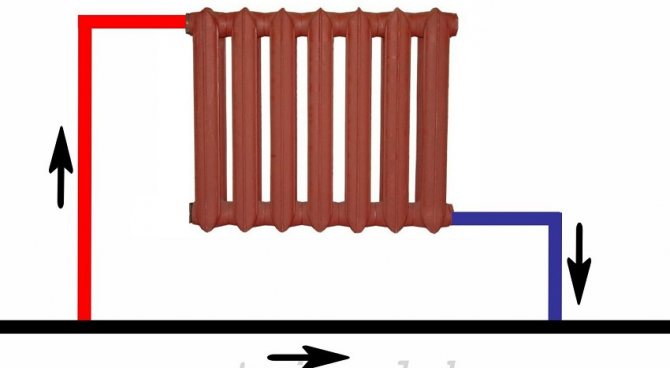

Cross or diagonal connection of radiators
These methods differ in the level of efficiency, in terms of heat transfer - up to 20-25%. Each of them has its own advantages and disadvantages, but a certain percentage of specialists prefer the diagonal method. As you can see in the figure, in this case, the distribution of hot water inside the thermal block for heating the room is more complete. In this case, the length of the battery does not matter.
The design of thermostats for heating radiators
A thermostat for a heating radiator consists of two parts - a valve (thermostatic valve) and a thermostatic head (thermostatic element, temperature controller). These products are produced for different pipe sizes and different types of heating systems. The thermostatic head is removable, regulators of different types and even different manufacturers can be installed on the same valve - the seat is standardized.
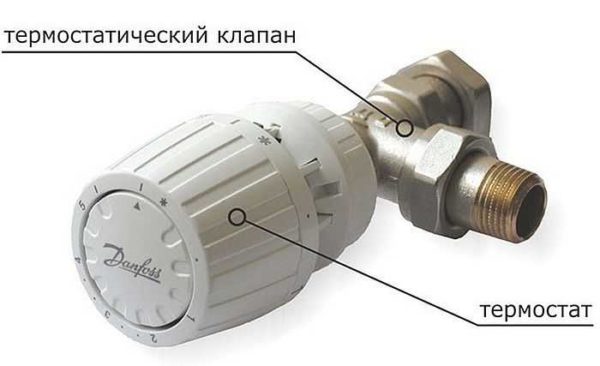

Thermostat for a heating radiator consists of two parts - a special valve (valve) and a thermostatic head (regulator)
Both valves and regulators are different, so before installing a thermostat for a heating radiator, you will have to get at least a little familiar with its structure, functions and types.
Thermostatic heads
There are three types of thermostatic elements for heating thermostats - manual, mechanical and electronic. They all perform the same functions, but in different ways, provide different levels of comfort, and have different capabilities.
Manual
Manual thermostatic heads work like a regular tap - turn the regulator to one side or the other, letting in more or less coolant. The cheapest and most reliable, but not the most convenient device. To change the heat transfer, you must manually turn the valve.
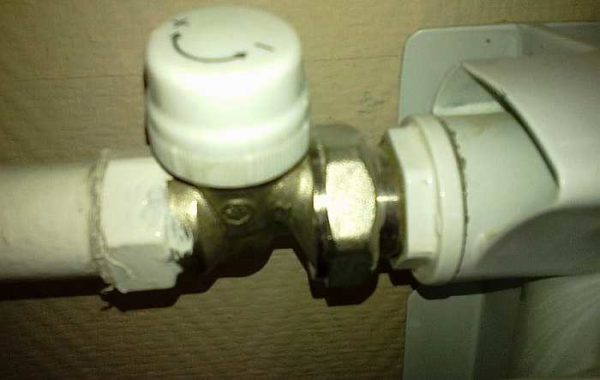

Manual thermal head - the simplest and most reliable option
These devices are quite inexpensive, they can be installed at the inlet and outlet of the heating radiator instead of ball valves. It will be possible to regulate any of them.
Mechanical
A more sophisticated device that maintains the set temperature in automatic mode. The basis of this type of thermostatic head is a bellows. It is a small elastic cylinder filled with a thermal agent. A thermal agent is a gas or liquid that has a large coefficient of expansion - when heated, they greatly increase in volume.
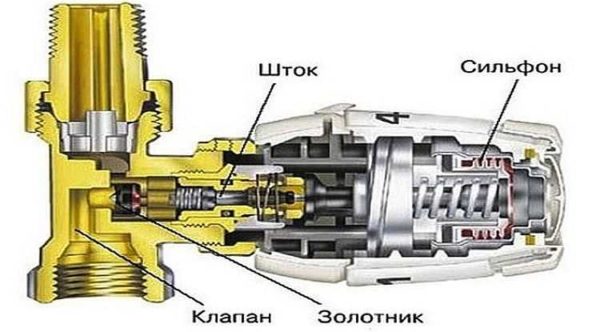

Thermostat device for a heating radiator with a mechanical thermostatic head
The bellows supports the stem that overlaps the flow area of the valve. Until the material in the bellows is heated, the stem is raised. As the temperature rises, the cylinder begins to increase in size (gas or liquid expands), it presses on the rod, which more and more overlaps the flow area. Less and less coolant passes through the radiator, it gradually cools down. The substance in the bellows also cools down, due to which the cylinder decreases in size, the rod rises, more coolant passes through the radiator, it starts to warm up a little. Then the cycle is repeated.
Gas or liquid
In the presence of such a device, the temperature in the room is quite precisely maintained at + - 1 ° C, but in general the delta depends on how inert the substance in the bellows is. It can be filled with some kind of gas or liquid. Gases react more quickly to temperature changes, but they are technologically more difficult to produce.
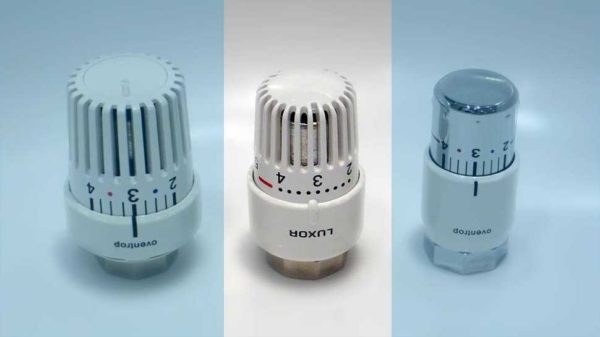

Liquid or gas bellows - not much difference
Liquids change volumes a little more slowly, but they are easier to manufacture. In general, the difference in the accuracy of maintaining the temperature is of the order of half a degree, which is almost impossible to notice. As a result, most of the presented thermostats for heating radiators are equipped with thermal heads with liquid bellows.
Valves and taps
Such fittings are the heat exchanger of the shut-off device. This means that the radiator is adjusted by turning the tap / valve in the desired direction. If you turn the valve to the stop by 90 °, the water flow into the battery will no longer flow. To change the heating level of the heater, the locking mechanism is set to the half position. However, not all fittings have such an opportunity. Some valves may leak after a short time in this position.
Installing shut-off valves allows you to manually adjust the heating system. The valve is inexpensive. This is the main advantage of such fittings. In addition, it is easy to operate, and no special knowledge is required to change the microclimate. However, there are drawbacks to locking mechanisms, for example, they are characterized by a low level of efficiency. The battery cooling rate is slow.
Shut-off valves
A spherical design is used. First of all, it is customary to install them on a heating radiator in order to protect housing from coolant leakage. Valves of this type have only two positions: open and closed. Its main task is to disconnect the battery if such a need arises, for example, if there is a risk of flooding the apartment. For this reason, stopcocks are cut into the pipe in front of the radiator.
If the valve is in the open position, the coolant circulates freely through the heating system and inside the battery. These taps are used if the room is hot. The batteries can be disconnected from time to time to reduce the room temperature.
However, ball valves must not be installed in the half position. With prolonged operation, the risk of a leak in the area where the ball valve is located increases.This is due to gradual damage to the ball-shaped closure that is located inside the mechanism.
Manual valves
This group includes two types of fittings:
- Needle valve. Its advantage is the possibility of half-installation. Such fittings can be located in any convenient position: completely opens / closes the access of the coolant to the radiator, significantly or slightly reduces the volume of water in the heating devices. However, there is also a drawback to needle valves. So, they are characterized by a reduced bandwidth. This means that after installing such valves, even in a fully open position, the amount of coolant in the pipe at the battery inlet will be significantly reduced.
- Regulating valves. They are specially designed to change the heating temperature of batteries. The pluses include the ability to change the position at the discretion of the user. In addition, such fittings are reliable. You will not have to frequently repair the valve if the structural elements are made of durable metal. There is a shut-off cone inside the valve. When the handle is turned in different directions, it rises or falls, which contributes to an increase / decrease in the flow area.
How to install correctly
They put a thermostat for a heating radiator at the inlet or outlet of the heater - there is no difference, they work with equal success in both positions. How to choose a place to install?
At the recommended installation height. There is such a point in the technical specifications. Each device is factory set - calibrated to control the temperature at a specific height and usually this is the top manifold of the radiator. In this case, the heat regulator is installed at a height of 60-80 cm, it is convenient to adjust it manually if necessary.
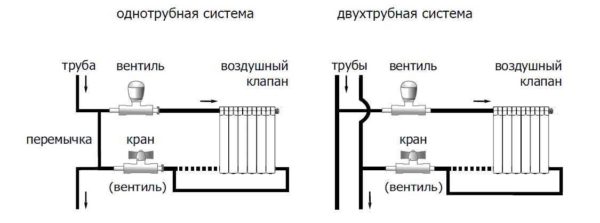

Installation diagrams of heat regulators for radiators
If you have a bottom saddle connection (pipes fit only from the bottom), there are three options - look for a device that can be installed at the bottom, put a model with an external sensor, or reconfigure the thermal head. The procedure is simple, the description should be in the passport. All you need is to have a thermometer and turn the head at certain moments in one direction, then in the other direction.
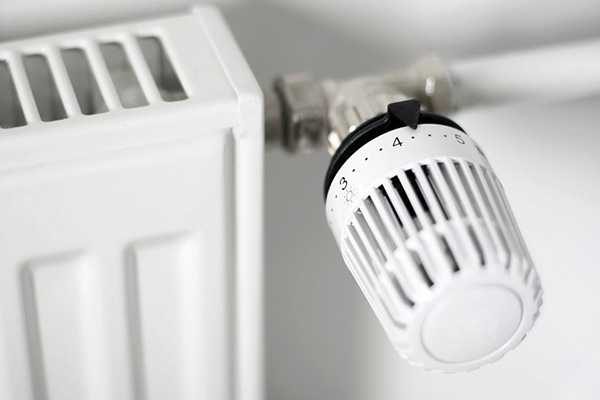

Standard installation - on fum tape or linen roll with packing paste
The installation process itself is standard. The valve has a thread. Suitable fittings are selected for it or a counter thread is cut on a metal pipe.
One important point to keep in mind for those who want to install a thermostat for a heating radiator in apartment buildings. If you have one-pipe wiring, they can only be installed if there is a bypass - a section of pipe that stands in front of the battery and connects two pipes together.
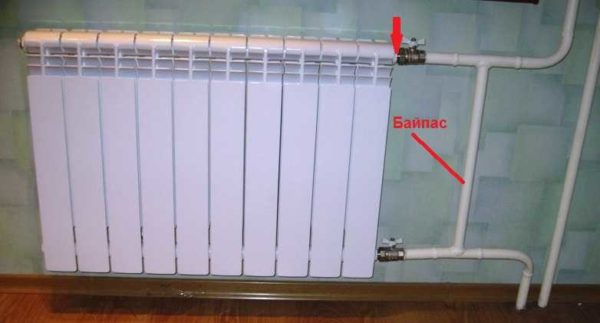

If you have a similar wiring (there may not be a pipe on the right), a bypass is required. Place the thermostat right behind the radiator
Otherwise, you will regulate the entire riser, which your neighbors will definitely not like. For such a violation, a very substantial fine can be written out. Therefore, it is better to put a bypass (if not).
Automatic adjustment
The advantage of this method is that there is no need to constantly change the position of the valve / tap. The required temperature will be maintained automatically. Heating control in this way provides the ability to set the desired parameters once. In the future, the heating level of the battery will be maintained by the automation unit or other device installed at the input of the heater.
If necessary, individual parameters can be set multiple times, which is influenced by the personal preferences of the residents. The disadvantages of this method include the significant cost of components.The more functional devices are for controlling the amount of coolant in heating radiators, the higher their price.
Electronic thermostats
These devices look like a control valve, but there is a significant difference - the display is incorporated into the design. It displays the room temperature to be obtained. Such devices work in tandem with a remote temperature sensor. It transmits information to the electronic thermostat. To normalize the microclimate in the room, you just need to set the desired temperature value on the device, and the adjustment will be performed automatically. They have electronic thermostats at the battery inlet.
Radiator control with thermostats
Devices of this type consist of two units: the lower (thermo-valve) and the upper (thermo-head). The first of the elements resembles a manual valve. It is made of durable metal. The advantage of such an element is the ability to install not only an automatic, but also a mechanical valve, it all depends on the needs of the user. To change the value of the heating temperature of the battery, the design of the thermostat provides for a bellows that exerts pressure on the spring-loaded mechanism, and the latter, in turn, changes the flow area.
Using three-way valves
Such devices are made in the form of a tee and are designed to be installed at the connection point of the bypass, the inlet pipe to the radiator, and the common riser of the heating system. To increase the efficiency of the operation, the three-way valve is equipped with a thermostatic head, the same as that of the previously discussed thermostat. If the temperature at the inlet to the valve is higher than the desired value, the coolant does not enter the battery. Hot water is routed through the bypass and further through the heating riser.
How to adjust (readjust)
All thermostats are factory set. But their settings are standard and may not coincide with your desired parameters. If something does not suit you at work - you want it to be warmer / colder, you can reconfigure the thermostat for the heating radiator. This must be done when the heating is running. You need a thermometer. You hang it at the point where you will control the state of the atmosphere.
- Close the doors, put the thermostat head in the extreme left position - completely open. The room temperature will start to rise. When it becomes 5-6 degrees higher than what you want, turn the regulator all the way to the right.
- The radiator starts to cool down. When the temperature drops to a value that you think is comfortable, begin to slowly turn the knob to the right and listen. When you hear that the coolant is noisy, and the radiator begins to warm up, stop. Remember which number is on the handle. It will need to be set to reach the required temperature.
It is not difficult to adjust the thermostat for the radiator. And you can repeat this action several times by changing the settings.
Installing a thermostat
Do-it-yourself installation of the thermostat is done by means of a threaded connection.
The coolant must be supplied through the regulator screwed into the radiator.
The arrow on the heat regulator body must match the heat carrier flow.
Video:
The thermostat is designed to measure the room temperature and control the locking mechanism.
This element must be installed horizontally, this directly affects the quality of your regulator.
A temperature sensor is installed in the thermostat and the heat from the battery should not affect it, nor should it be exposed to direct sunlight, should not be covered by a curtain or any furniture, should not be installed below 80 cm from the floor (near the floor there is air has a lower temperature).
Adjustment and calibration of the thermostat is carried out at the first start-up of our heating system.
When setting up the thermostat, strictly follow the instructions for this device, but at the same time observe one general rule - the thermostat must be adjusted after the radiator warms up to the maximum temperature.
If your goal is comfort, then be sure to install a thermostat.
Video:

